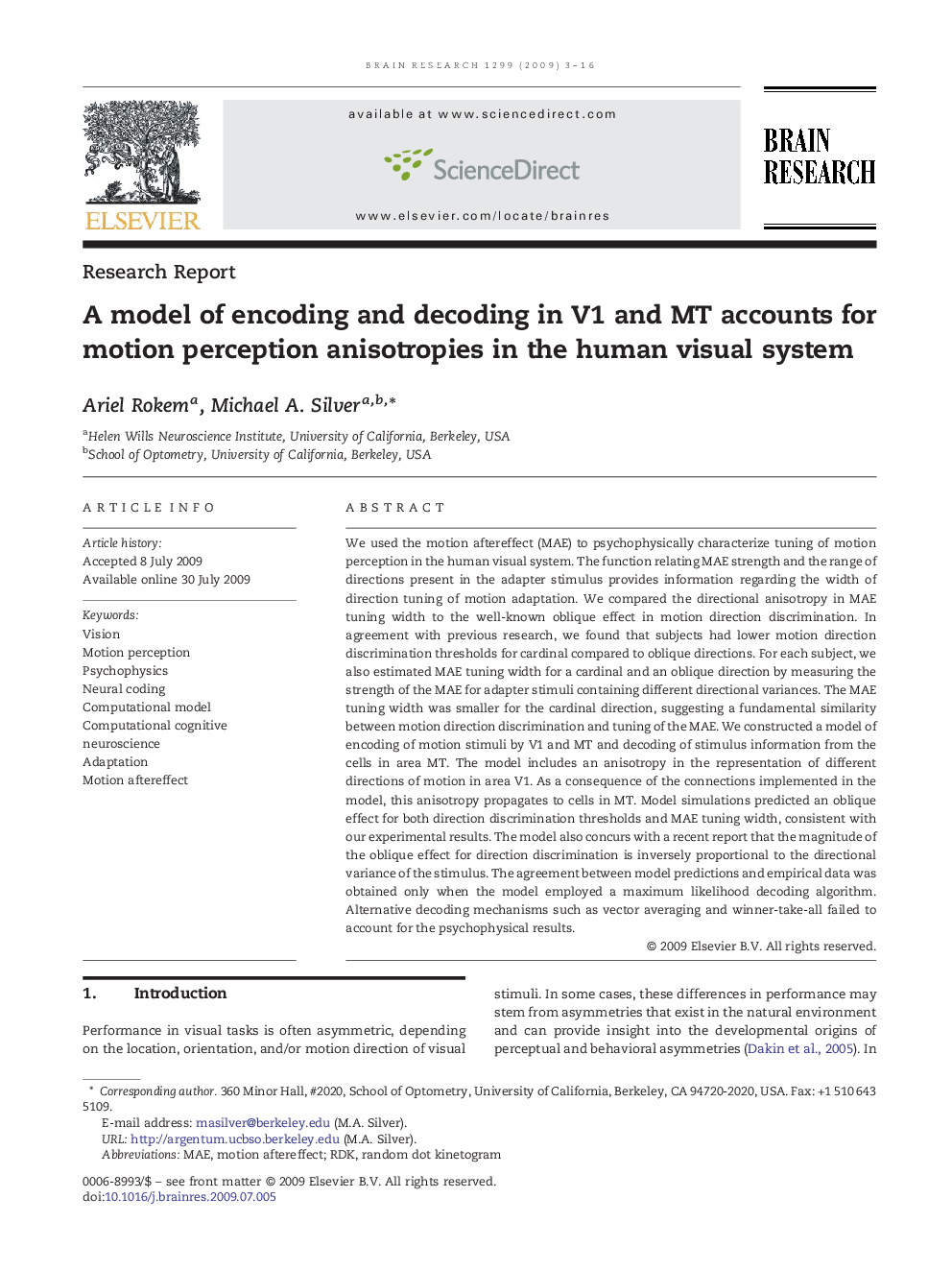| کد مقاله | کد نشریه | سال انتشار | مقاله انگلیسی | نسخه تمام متن |
|---|---|---|---|---|
| 4327783 | 1614140 | 2009 | 14 صفحه PDF | دانلود رایگان |

We used the motion aftereffect (MAE) to psychophysically characterize tuning of motion perception in the human visual system. The function relating MAE strength and the range of directions present in the adapter stimulus provides information regarding the width of direction tuning of motion adaptation. We compared the directional anisotropy in MAE tuning width to the well-known oblique effect in motion direction discrimination. In agreement with previous research, we found that subjects had lower motion direction discrimination thresholds for cardinal compared to oblique directions. For each subject, we also estimated MAE tuning width for a cardinal and an oblique direction by measuring the strength of the MAE for adapter stimuli containing different directional variances. The MAE tuning width was smaller for the cardinal direction, suggesting a fundamental similarity between motion direction discrimination and tuning of the MAE. We constructed a model of encoding of motion stimuli by V1 and MT and decoding of stimulus information from the cells in area MT. The model includes an anisotropy in the representation of different directions of motion in area V1. As a consequence of the connections implemented in the model, this anisotropy propagates to cells in MT. Model simulations predicted an oblique effect for both direction discrimination thresholds and MAE tuning width, consistent with our experimental results. The model also concurs with a recent report that the magnitude of the oblique effect for direction discrimination is inversely proportional to the directional variance of the stimulus. The agreement between model predictions and empirical data was obtained only when the model employed a maximum likelihood decoding algorithm. Alternative decoding mechanisms such as vector averaging and winner-take-all failed to account for the psychophysical results.
Journal: Brain Research - Volume 1299, 3 November 2009, Pages 3–16